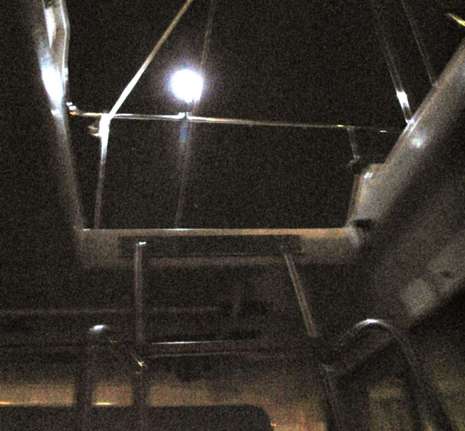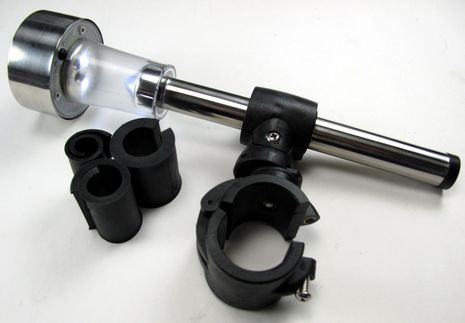RailLight Mini, another winner from SolLight
One good sign: Recently, a friend who'd eaten at a waterfront restaurant called to ask if I knew "that there was a bright white light shining on Gizmo's flying bridge?" Now, in truth, Gizmo's float is just a few hundred feet from the deck of that restaurant and the SolLight RailLight Mini isn't all that bright, but it sure is easy to install and use...
A mini solar panel, a replaceable NiMH battery, twin LEDs, an automatic light sensor switch (along with a waterproof manual one), plus a versatile and detachable rail mount are the winning recipe. And the lightweight stainless and nylon construction look to be long lasting. In fact, test samples of the company's cute Lightship and shimmering LightCap lantern-in-a-bottle are still working after years of use, and still appreciated. SolLight also offers a Premium RailLight that's almost twice as bright, includes several more mounting options, and might also serve as a dinghy running light.
At any rate, below is an attempt at illustrating how the Mini illuminates the steps up to Gizmo's flying bridge. Photos like this are dodgy, but I can tell you that it works, and at about $30 is appealing little cruising accessory. I just wish that installing some serious solar panels on the cabin top aft of those stairs wasn't a 100 times more complex a project. I will be seeking your advice on the details, and if any of you have had good experience with an online (or Maine-based) solar panel/controller distributor, please let me know in the comments.


 Share
Share
But can't you buy the same light sans the clamp at Walmart for $4.00?